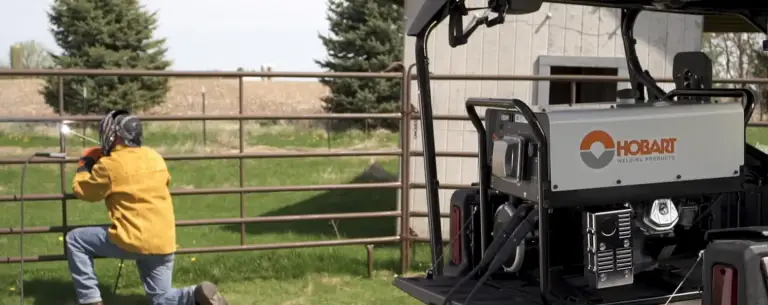How To Strike An Arc When Stick Welding
This post contains affiliate links.
How To Strike An Arc When Stick Welding

One issue that beginner stick welders have is that their rod tends to stick a lot when they are trying to start their weld. If the arc strike isn’t performed properly, then the tip of the electrode will stick to the workpiece and burn up.Â

There are two main methods that I like to use when starting a stick arc. Once practiced, you will be able to start an arc flawlessly. Finding the best way to strike an arc is largely personal preference.Â
Hobart 1/8″ 7018 rods – Check Price On Amazon
Dragging Method
The first is a dragging method similar to striking a match. With this method, the tip of the electrode is dragged across the workpiece and then brought back into its original position to start the weld. This initiates the electrical current in a split second. It can help to hold the rod with your non dominant hand so that the rod shakes less when you are performing this dragging method. Holding the rod with your non dominant hand closer to the end of the rod will give you more stability. Keep in mind that smaller diameter stick electrodes wiggle more than larger ones. Burning a 3/32″ rod will have more play to it than a 5/32″ rod.Â

Arc strikes with a stick rod make a black mark on the metal being welded, and these are regarded as a defect in most weld tests. It is good practice to always weld back over your arc strikes whenever possible, so they are invisible once the weld is completed. Â
Tapping Method
Some stick welders like to use the tapping method to initiate their arc. With this method, instead of dragging the electrode, you just tap the electrode on the workpiece and then lift. This is done very fast and takes a bit of practice. This is tougher for beginners than the dragging method, because if you don’t tap quickly then the rod will stick to the workpiece.Â
Troubleshooting
If your electrode sticks to your workpiece, there is a preferred method of getting it unstuck. I like to disconnect the stinger by releasing the spring mechanism. This will cut off amperage to your rod. Then you can set your stinger down and remove the stick electrode from your work piece by hand. If you try to remove the electrode while the stinger is clamping it, the amperage will continue to heat up the rod and burn it up. This can ruin your gloves or burn your hand!

Sometimes having the rod stick to your workpiece is not a problem with your technique. Many times, it is an amperage problem. If your amperage is too low, the rod will always stick. This is because there is not enough current to start your weld. The tip of a stick electrode has bare filler rod surrounded by flux. Therefore, inadequate amperage will just fuse that filler metal to your work piece.Â
If you are consistently have trouble with the rod sticking to your workpiece, try bumping up the amperage incrementally until you have consistent success. Welding on the hotter end of the amperage range generally produces a better looking, stronger weld – it is much more enjoyable than trying to weld with low amperage. It will also make it easier to strike your arc in any position.Â
A recommended amperage chart for stick welding can be found here.








